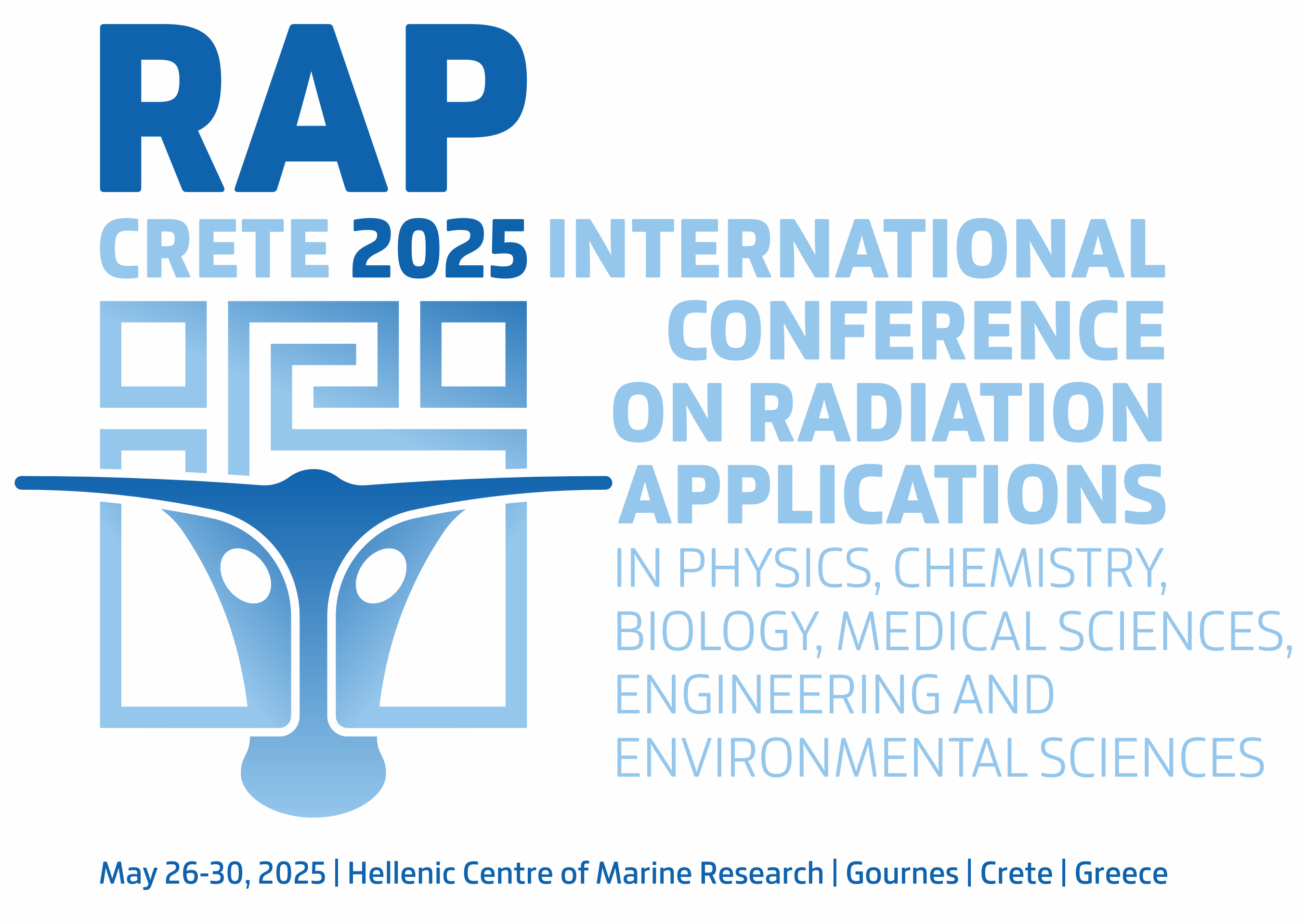Vol. 6, 2021
Radon and Thoron
Open problems in radon research
P. Bossew, E. Petermann
Pages: 66-71
DOI: 10.37392/RapProc.2021.14
Abstract | References | Full Text (PDF)
In spite of decades of scientific research about radon, which has resulted in an immense corpus of literature and deep knowledge about all aspects of radon physics, its behaviour in the environment, its measurement and its dangers and benefits, many technical challenges remain. In course of increasingly strict regulation, new challenges emerged, mostly related to quality assured decision making in radon abatement policy and to application of advanced statistical methodology. In this paper, we give an overview about a number of topics of radon research, whose discussion and deeper investigation we find, at the one hand, important for the sake of implementing efficient radon abatement policy and interesting scientifically, on the other, as they elucidate the complexity of environmental systems up to their interaction with society in a paradigmatic manner.
- WHO handbook on indoor radon: a public health perspective , WHO, Geneva, Switzerland, 2009.
Retrieved from: www.who.int/publications/i/item/9789241547673
Retrieved on: Jun. 21, 2021 - The Council of European Union. (Dec. 5, 2013). Council Directive 2013/59/EURATOM laying down basic safety standards for protection against the dangers arising from exposure to ionising radiation, and repealing Directives 89/618/Euratom, 90/641/Euratom, 96/29/Euratom, 97/43/Euratom and 2003/122/Euratom .
Retrieved from: http://eur-lex.europa.eu/legal-content/EN/TXT/PDF/?uri=OJ:L:2014:013:FULL&from=EN
Retrieved on: Aug. 10, 2021 - Radiation Protection and Safety of Radiation Sources: International Basic Safety Standards , GSR Part 3, 2014.
Retrieved from: https://www-pub.iaea.org/MTCD/Publications/PDF/Pub1578_web-57265295.pdf
Retrieved on: Aug. 10, 2021 - MetroRADON: Metrology for radon monitoring , EURAMET, Braunschweig, Germany, 2017 – 2020.
Retrieved from: http://metroradon.eu/
Retrieved on: Aug. 10, 2021 - H. Haanes, H. K. Skjerdal, R. Mishra, A. L. Rudjord, “Outdoor measurements of thoron progeny in a 232Th-rich area with deposition-based alpha track detectors and corrections for wind bias,” J. Eur. Radon Association, vol. 2, Jun. 2021.
DOI: 10.35815/radon.v2.6130 - Progetto Ribibui - Sviluppo di un protocollo standard per la misurazione della concentrazione di radon in grandi edifice , SUPSI: Dipartimento ambiente costruzioni e design, Lugano, Svizzera, 2017. ( Ribibui project - Development of a standard protocol for the measurement of radon concentration in large buildings , SUPSI: Department of Environment, Construction and Design, Lugano, Switzerland, 2017.)
Retrieved from: www.supsi.ch/ist/eventi-comunicazioni/news/2017/2017-02-09.html
Retrieved on: Aug. 10, 2021 - R. Trevisi et al., “Are radon priority areas, identified on survey in dwellings, representative of radon levels in workplaces?,” deposited at J. Eur. Radon Association, 2021.
- A. Tsapalov, K. Kovler, “Indoor radon regulation using tabulated values of temporal radon variation,” J. Environ. Radioact., vol. 183, pp. 59 – 72, Mar. 2018.
DOI: 10.1016/j.jenvrad.2017.12.003
PMid: 29306093 - European Atlas of Natural Radiation , 1st ed., European Commission, Luxembourg, Luxembourg, 2019.
Retrieved from: https://remon.jrc.ec.europa.eu/About/Atlas-of-Natural-Radiation/Download-page
Retrieved on: Aug. 10, 2021 - Fundamental Safety Principles, SF-1, 2006.
Retrieved from: https://www-pub.iaea.org/MTCD/publications/PDF/Pub1273_web.pdf
Retrieved on: Aug. 10, 2021 - E. Petermann, P. Bossew, “On the effectiveness of radon priority areas – a critical evaluation,” deposited at Sci. Total Environ., 2021.
- P. Bossew, E. Petermann, “What is the objective of radon abatement policy? - Revisiting the concept of radon priority areas,” in Proc. 15th Int. Workshop on the Geological Aspects of Radon Risk Mapping (GARRM-15) , Prague, Czech Republic, 2021.
- Radon Test Online , RadonTest Group, 2017.
Retrieved from: https://radontest.online/
Retrieved on: Aug. 11, 2021 - A. Tsapalov et al., “Involving schoolchildren in radon surveys by means of the “RadonTest” online system,” J. Environ. Radioact., vol. 217, 106215, Jun. 2020.
DOI: 10.1016/j.jenvrad.2020.106215
PMid: 32217247 - RadoNORM - Towards effective radiation protection based on improved scientific evidence and social considerations – focus on Radon and NORM , European Commission, Luxembourg, Luxembourg, 2020.
Retrieved from: https://www.radonorm.eu/
Retrieved on: Aug. 11, 2021 - M. Martell et al., “Evaluation of citizen science contributions to radon research,” J. Environ. Radioact., vol. 237, 106685, Oct. 2021.
DOI: 10.1016/j.jenvrad.2021.106685
PMid: 34265518 - S. Bonner, J. Ito, P. Franken, Safecast, Tokyo, Japan, 2011.
Retrieved from: https://safecast.org/about/
Retrieved on: Aug. 11, 2021 - M. Baskaran, Radon: A Tracer for Geological, Geophysical and Geochemical Studies , 1st ed., Cham, Switzerland: Springer, 2016.
DOI: 10.1007/978-3-319-21329-3 - P. Bossew, M. Janik, “(2021): Seismic signals in radon time series,” presented at the 7th Int. Conf. Time Series and Forecasting (ITISE 2021), Gran Canaria, Spain, Jul. 2021.
- E. Petermann, H. Meyer, M. Nussbaum, P. Bossew, “Mapping the geogenic radon potential for Germany by machine learning,” Sci. Total Environ., vol. 754, 142291, Feb. 2021.
DOI: 10.1016/j.scitotenv.2020.142291
PMid: 33254926 - E. Petermann, P. Bossew, “Mapping indoor radon hazard in Germany: The geogenic component,” Sci. Total Environ., vol. 780, 146601, Aug. 2021.
DOI: 10.1016/j.scitotenv.2021.146601
PMid: 33774294 - P. Bossew, “Mapping the Geogenic Radon Potential and Estimation of Radon Prone Areas in Germany,” Radiat. Emerg. Med., vol. 4, no. 2, pp. 13 – 20, Aug. 2015.
Retrieved from: http://crss.hirosaki-u.ac.jp/rem_archive/rem4-2
Retrieved on: Aug. 10, 2021 - P. Bossew, “Local probability of indoor radon concentration to exceed a threshold, estimated from the geogenic radon potential,” Nucl. Technol. Radiat. Prot., vol. 32, no. 1, pp. 70 – 76, 2017.
DOI: 10.2298/NTRP1701070B - P. Bossew, “Stochastic dependence of Rn-related quantities,” in Proc. First East European Radon Symposium (FERAS 2012), Cluj-Napoca, Romania, 2012, pp. S44 – S55.
Retrieved from: www.nipne.ro/rjp/2013_58_Suppl.html
Retrieved on: Aug. 10, 2021 - P. Bossew, “Determination of radon prone areas by optimized binary classification,” J. Environ. Radioact., vol. 129, pp. 121 – 132, Mar. 2014.
DOI: 10.1016/j.jenvrad.2013.12.015
PMid: 24412776


